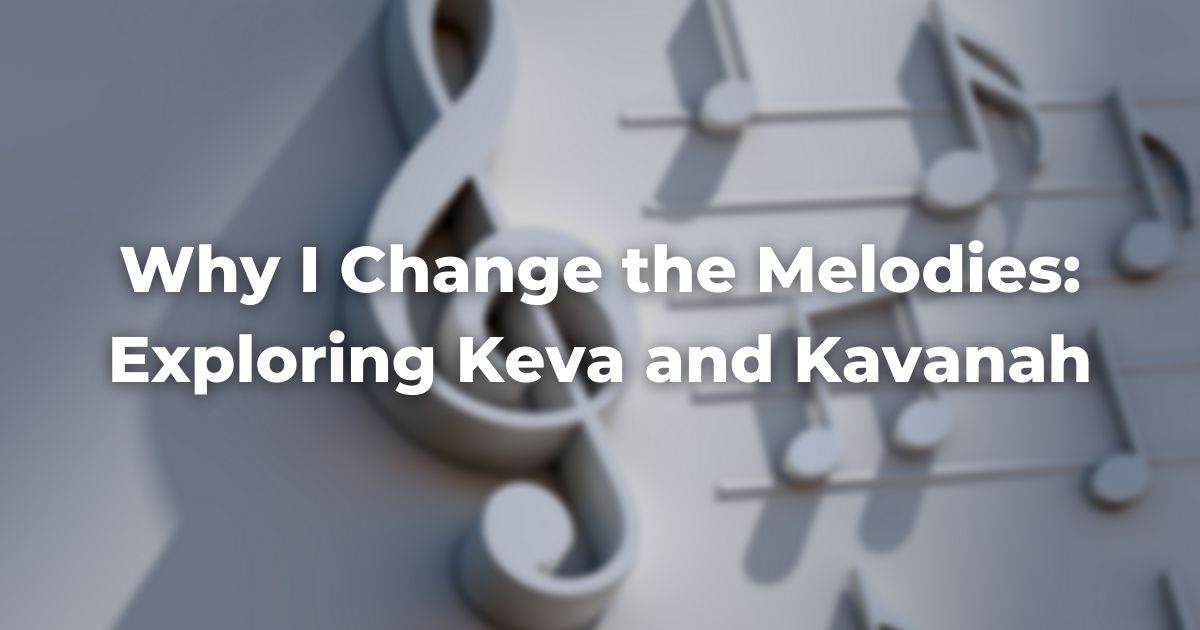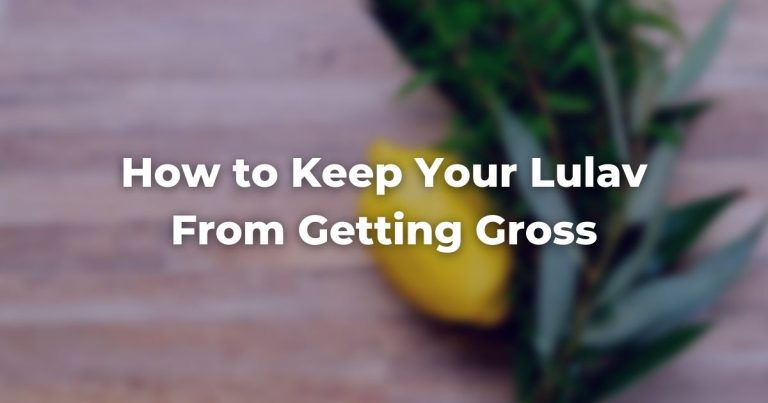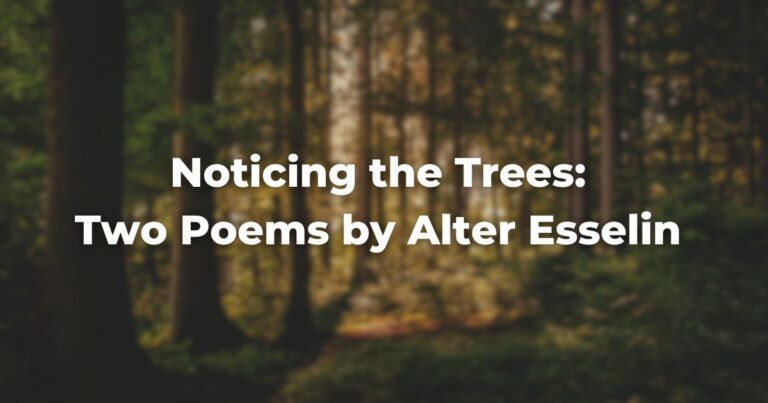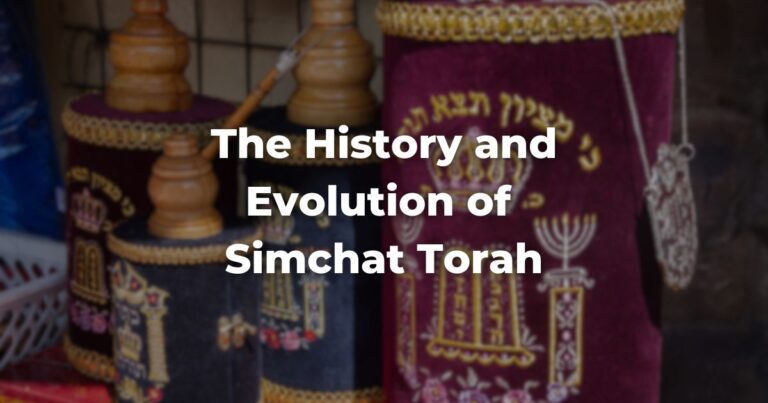On Shabbat Shira, the Shabbat of Song, we read the Song of the Sea, Shirat Hayam, which the Jewish people sang as they crossed the sea and escaped from Pharoah to Freedom. This song, we can imagine, was so immersed in kavanah (intention) as the Israelites witnessed this amazing miracle of the splitting of the sea and took their first steps into their new lives of Freedom.
Although this text may have once come spontaneously out of the hearts of the Jewish people as kavanah, it has since become keva (fixed) in our prayer book. We recite it daily during Pesukei Desimrah (the Preliminary service), and also chant it both on Shabbat Shira with Parshat Beshalah, and on Passover as we recall the story once again.
In honor of Shabbat Shira, let’s take a moment to examine our relationship to song and how it affects the delicate balance of keva (the fixed text that we read from our liturgy) and kavanah (the spontaneity and intention of our hearts).
Looking at these two concepts through the lens of music itself: the words on the page are like music notes: the fixed form, something that guides us and is important. It is a container that we are given for something that is complex and even scary at times…our relationship to G-d, both as an individual and as a people.
But when a musician plays music on a page, it does not necessarily portray emotion or connection. It gives an idea of the song, yes, but not feeling, not kavanah. You will know what I mean if you have ever compared a new young musician to a professional one.
So how do we accomplish adding this kavanah, this intention and connection to the text, our lives, and G-d while we pray with the keva, the fixed text?
If I had an answer, it would be quite remarkable (and impossible, as each person prays in their own way, creating their own connection to the text or something greater than it). But I would like to share some of my own philosophy of my cantorate and some of the thoughts I have in setting up the text, the keva, in such a way that hopefully creates meaning and intention, the kavanah.
A few times, congregants have approached me and said “why do you keep introducing new melodies? Why can’t we just sing the old ones? I am more comfortable with the old ones!” I have also had congregants come up to me and tell me how much they enjoy the new melodies and find meaning in singing along with them.
These two conversations might happen during the same kiddush! This is exactly what I am going for.
Balance: comfort and a little discomfort, old and new, a desire to sing as a community, and also stay awake and pay attention and renew our prayers, Shir Hadash, creating a new song.
I completely understand the connection and love of those “misinai” melodies, those melodies that feel like they came straight from Sinai, and that evoke memories of singing next to our grandfather, or participating in a Bar/Bat Mitzvah.
Personally, I have particular melody of L’Dor Vador, which always makes me think of a beautiful moment during Neilah on Yom Kippur when I saw my mother and grandmother both ascend the bimah to stand in front of the ark as I led this L’dor V’dor… which means from generation to generation, and had an immense feeling of connection to G-d and to our people Israel.
That melody does it for me. I get it. And I do not have any desire to get rid of those old melodies. However, I also have seen those misinai melodies become rote.
If we sing the same melodies week after week, we may no longer be thinking of the text or our connection to G-d… we might be singing habitually along, and be thinking about what we plan to make for dinner this week.
That is not a bad thing. But to have it week after week can become stale.
This is why I try to add in new melodies that might evoke new meaning, or help us look at the text in a new way to find a new connection through kavanah, that intention.
I do not intend for it to be jarring or scary, singing along and then suddenly the melody changes to one you do not know. Please… see it as an invitation. A moment to create that misinai-ness, that misinai feeling singing together as a community through a new lens.
Take a moment to listen, look at the text itself, and then take a shot at singing along and opening your heart to a new interpretation or feeling of the text. Don’t worry, the old melody that you love will come back around another week, I promise.
My hope for each of us is to be active pray-ers during our moments of prayer. Not passively listening or singing along by rote.
One Hasidic interpretation by Levi Yitzchak of Berditchev says
“At each stage of our religious development, as our sense of G-d’s wonder deepens, we sing differently to Gd—we sing a new song.”
I would take this a step further and say not only at each stage of our development but throughout each moment of our lives.
We have probably all had moments of deep kavanah, deep intention, or prayer. Maybe not in shul. But those moments when something intense in our lives is happening. Something joyful and amazing, or something sad, scary, and life-changing. We cannot expect to have those moments of deep kavanah during every prayer service in our lives.
Rabbi Deborah Sacks Mintz points out that there is a midrashThis word is used in two ways, as both a concept and a literature. As a concept, midrash is the expansive interpretation of biblical texts. The term is used to describe the practice of rabbinic interpretation. As a text, it refers to specific collections of interpretations, particularly from the third to ninth centuries in the Land of Israel and Babylonia. Plural: Midrashim
Read more from Pesachim in the Babylonian TalmudReferring to one of two collections, the Jerusalem and Babylonian Talmuds, edited in the 6th century, that contains hundreds of years of commentary, discussion, and exploration of the ideas in the Mishnah. One could describe it as Mishnah + Gemara = Talmud Read more that explores the fact that there are some Psalms that begin “l’David Mizmor” (of David a Psalm) and some that begin “Mizmor L’David” (a Psalm of David).
And the Rabbis, of course, couldn’t just let this go but had to dive into the reason behind these different beginnings.
They say that when the Psalm begins with “l’David Mizmor” (of David a Psalm), this teaches that the Divine Presence rested upon David first, and then afterward he recited the Psalm. However, if the psalm opens “Mizmor L’David” (a Psalm of David), accordingly to the Rabbis, this teaches that he first recited the Psalm and then afterwards the Divine Presence rested upon him.
So in this Midrash, we have this picture of King David, one who was composing Psalms and prayers and who was not always inspired initially by the Divine Presence.
Sometimes he was, which caused the Psalm to pour out of him. Sometimes he wasn’t, but he created the Psalm and then experienced the Divine presence.
Perhaps this teaches us that sometimes we may feel that Kavanah, that intention going into the prayer, and be able to use the Keva, the fixed text, to help strengthen that Kavanah. And sometimes, we might not.
We might be tired, had a long week, or have something else on our minds, and we need that Keva, that fixed text with perhaps a push from a special melody, to help create our own kavanah, our intention behind those prayers, which might come later. Either is ok! Either is meaningful.
So as a Sh’lichat Tzibbur, my goal is not to “willy-nilly” pick the melody for each week just to change things up. My goal is to allow our community to explore our own connection to each other and to G-d by finding ways to enhance our kavanah, our intention within our prayers.
Whether that be hearing an old familiar melody that evokes a special memory, or discovering a new melody that brings something else out for us in the text. I only ask you to be open to exploring along with me.
The Hasidic master Elimelech of Lizkeshk taught: “During the six days of the week, we reach toward the Divine through the work we do in the world, but on Shabbat we reach toward G-d through prayer and song”. So on Shabbat Shira, I encourage you to keep exploring your own prayer practice, and be open to exploring a practice as a community as well, so that we might all continue to reach toward G-d through prayer and song.
Author
-

Nichole Chorny is the Cantorial Intern at Congregation Anshei Israel in Tucson, Arizona and in 2024 is celebrating her 10th year serving the congregation. She also began serving as Education & Youth Director in July 2020, and is currently participating in the CICA program (Cantorial Intern of the Cantors Assembly). As a native Tucsonan, Nichole has deep roots in the Tucson Jewish community. Nichole has developed and nurtured meaningful relationships with congregants of all ages and continues to develop family and youth programming, along with synagogue-wide programming for cross-generational engagement. She encourages life-long Jewish learning by continuing to grow lay-leadership, post-Bar/Bat Mitzvah service leaders, and TorahRefers to the first five books of the Hebrew Bible, the Tanakh, also called the Five Books of Moses, Pentateuch or the Hebrew equivalent, Humash. This is also called the Written Torah. The term may also refer to teachings that expound on Jewish tradition. Read more/Haftarah readers. Nichole has a passion for fostering a love of Judaism in congregants of all ages.
View all posts






